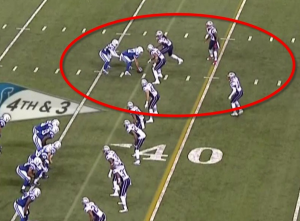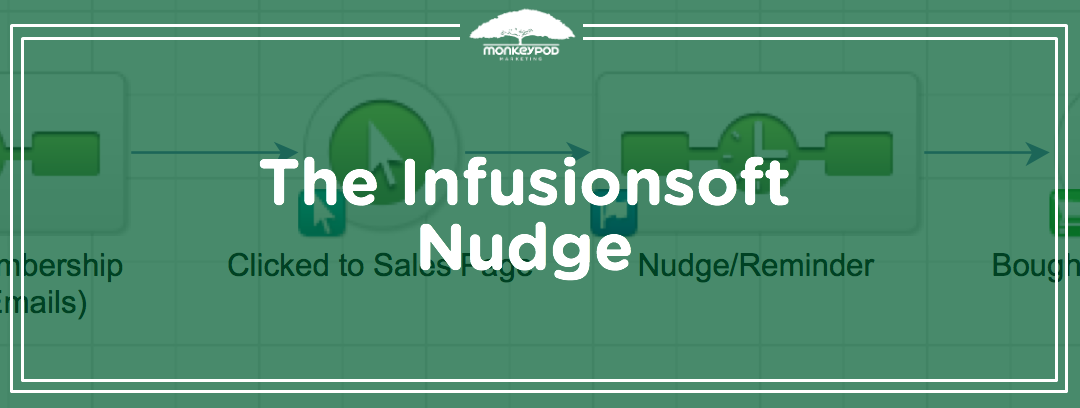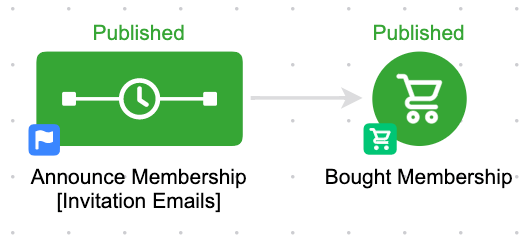First, there was the wild conclusion to the Michigan v Michigan State game. (As you may know, I’m an MSU alum and was pretty pleased about this)
And then there was another play with the Indianapolis Colts trying some trickery with an unconventional line-up.
As I sat down to finish writing a blog post this morning I kept getting distracted by posts about those plays. They were popping up in my Twitter feed, my Facebook feed, and I even got a few texts and emails from people rehashing the excitement in one way or another.
So, I decided to postpone the blog post I had been writing, and tackle this one instead. (See what I did there?)
I want to talk about the importance of having a contingency plan.
Now, the U of M play doesn’t really deserve to be bashed too hard. They were punting the football away, on fourth down, with 10 seconds left in the game. One way or another, the ball was mishandled and MSU was able to get to the kicker; and the ball flew almost directly into the hands of an MSU player who was already streaking toward the end-zone.
Really tough luck.
Yeah, the kicker probably should have fallen on the ball instead of trying to handle it, but hindsight is 20:20 and it was a broken play once the snap was mishandled.  So that one may not illustrate my point as clearly here, but as an MSU fan, I felt like I needed to mention it. It’s the Colt’s fake punt play that really baffles me. They were trying to trick the defense. The coach even said so after the game.
So that one may not illustrate my point as clearly here, but as an MSU fan, I felt like I needed to mention it. It’s the Colt’s fake punt play that really baffles me. They were trying to trick the defense. The coach even said so after the game.
They had a play designed to move some players around, and the whole goal of the play was to catch the defense unprepared, perhaps to lure them into some sort of penalty, and generally cause confusion which they could then exploit.
But as players shuffled around and then settled into their spots, it became clear (to most people anyway) that this play wasn’t going to work out very well.
In fact, it looked like it would certainly be a loss of yardage as the Colts were now set to snap the ball to a seemingly undefended player. They stood for a few seconds…and then they snapped the ball anyway.
And sure enough, they were sacked for a loss of yards and gave the ball to the Patriots with excellent field position.
Now I’m not saying you shouldn’t practice and run trick plays.
Some coaches and teams have made their names running unorthodox plays. What I’m suggesting is that whether it be with football, or with marketing, you need to have a contingency plan.
You need to have a safety net in place.
Let me share a real life example from a campaign my friend Tyler recently launched. You see, Tyler runs a successful business where he teaches strategies for how to trade stock options. Recently he launched a membership program so that he could make himself available in one-to-many typesetting, instead of his usual consulting packages.
So, Tyler sent out an email message to his audience announcing the new membership he’d be building and driving people to the page where they could learn more about it.
He built it like this:
Pretty straightforward. Totally functional.
He built it as a campaign instead of a broadcast because he wanted to send more than one email plugging the membership and the benefits, and he wanted all the emails to stop in someone signed up. We had a conversation around this scenario, and decided to drill in a little deeper.
If we want someone to buy, first we need them to click through to the sales page. And because we know that clicking is something Infusionsoft can track, that gives us the ability to add in what I like to call “The Infusionsoft Nudge”. You see, if you ever have two actions you want someone to take, you can (and should) always include a nudge. So that if they take action number one, but don’t take action number two, they get a reminder prodding them to move along.
Here’s how it looks for Tyler:
The first sequence and the last goal are still identical. But now what we’ve done is we’ve added a follow-up for those people who click but don’t buy.
This is our safety net.
We’ve still built out what we’d like to happen ideally, but we’ve also structured our contingency plan in case it doesn’t happen exactly as planned.
This simple strategy can be employed literally any time you need someone to do two things.
Like, click and then register. Register and then attend. Buy and then buy again. Submit the first part of a form, then submit the second part. If you are designing any sort of strategy, you should always ask yourself:
What do I want to happen? What are the other scenarios that could happen? What will I do in each of the scenarios?
And then practice your plan B, your plan C and your plan D. If the Colts had simply said “We want this to happen, but if it doesn’t, we’ll call a timeout” they’d probably have been much more successful.
If you’d like to learn more about this concept, or see it in action, you can download the Abandoned Cart Recovery sequence from the marketplace, or check out my CB: Trilogy course where I cover this concept (and much more) in depth.







Great tip. I love using this little nugget. I’ll usually make the follow up email non-branded as if I’m sitting down at outlook to send it myself with a simple call to action of “just reply to this email with any questions”, which opens the conversation with more qualified leads.
Yup yup. Gotta love it. Really you’re capitalizing on the fact that they JUST took an action. So any follow up can be effective at the right moment, but you’re taking it one level further by having it appear less automated. I love it!
Great post (as always – you rock) – in the UK, we call this a Cart Abandoned Sequence. Similar to what Infusionsoft calls their campaign – the Infusionsoft Nudge is way cooler though… Consider that name stolen.
Yeah, if it’s regarding a sale then I definitely call it Abandoned Cart Sequence, the reason I go with “The Nudge” or “The Infusionsoft Nudge” is because sometimes the two things you need them to do aren’t related to a purchase at all. I was working with a customer who had a 6-stage self assessment. So, she created a 6-part web form for them to submit. Well, as you might image, most people would fill out the first, but fewer would submit the next, and even fewer the third, etc. So, we built in The Nudge between each stage so that if they took too long they got a follow up saying “Hey, we saved your spot! Click here to finish your assessment” and as a result conversions went up 64%. Call it whatever you like, but just DO IT!